Autism and Ehlers Danlos Syndrome
Understanding the link between autism and Ehlers-Danlos Syndrome. Discover shared symptoms and genetic factors.

Autism and Ehlers-Danlos Syndrome: Exploring the Connection
Diving into the intricate relationship between autism and Ehlers-Danlos Syndrome (EDS) sheds light on how these two conditions intersect and potentially influence each other. To comprehend this connection fully, we must first gain an understanding of autism and Ehlers-Danlos Syndrome individually before delving into the link between them.
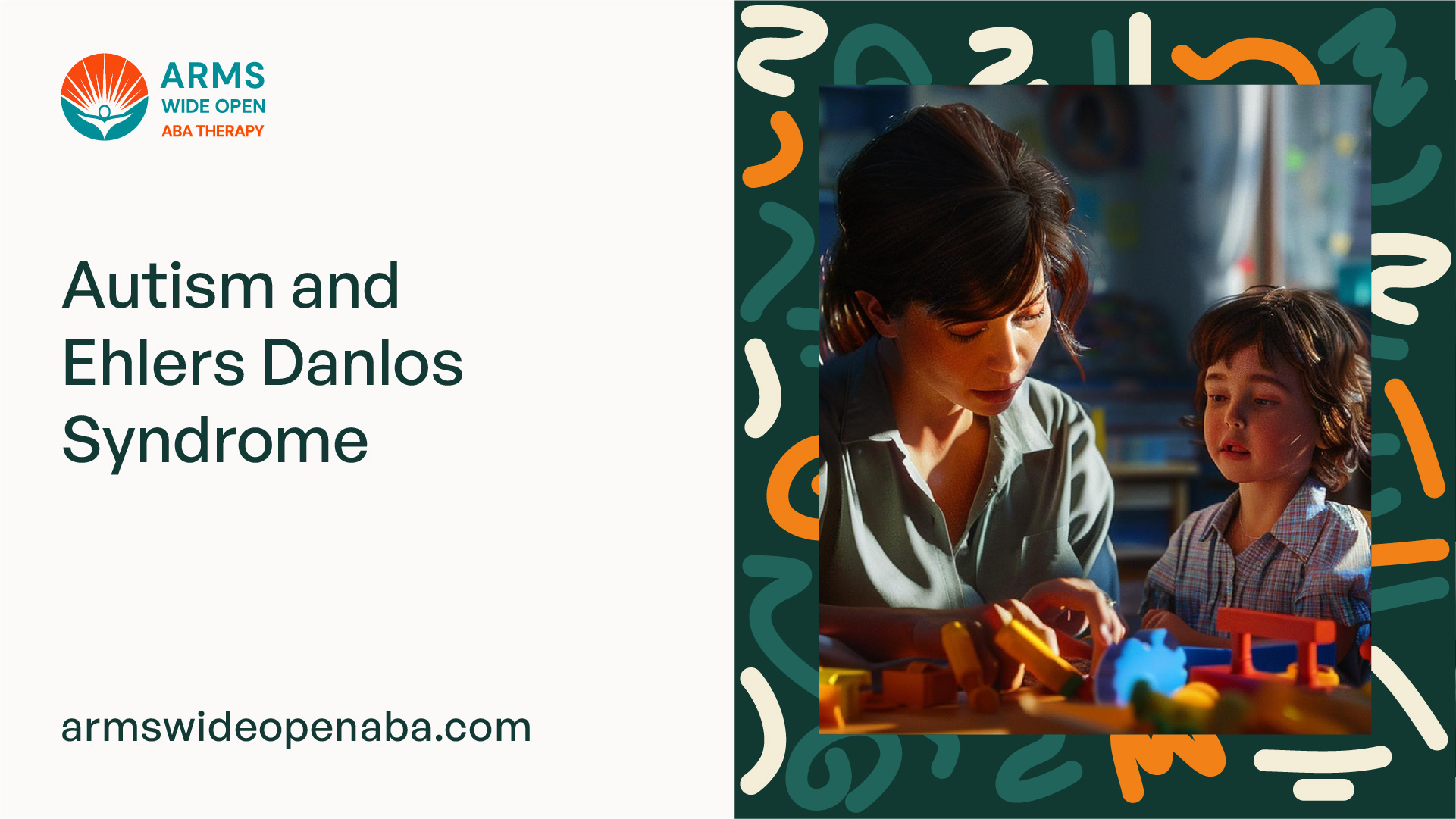
An Overview of Autism
Autism, a complex neurodevelopmental disorder, is characterized by challenges in social interaction, communication, and repetitive behaviors. Individuals with autism may experience difficulties in varying degrees, from mild to severe, impacting their daily functioning and interactions with others.
An Overview of Ehlers-Danlos Syndrome
Ehlers-Danlos Syndrome (EDS) encompasses a group of genetic connective tissue disorders that affect the skin, joints, and blood vessel walls. EDS is known for causing hypermobility, skin elasticity, and tissue fragility, among other symptoms. Different types of EDS exist, each with its unique set of symptoms and complications.
Uncovering the Link between Autism and Ehlers-Danlos Syndrome
Recent research has indicated a potential association between autism and Ehlers-Danlos Syndrome, suggesting overlapping features and shared genetic factors between the two conditions. Understanding how these conditions intersect can provide valuable insights into their co-occurrence and the impact they may have on individuals affected by both autism and Ehlers-Danlos Syndrome.
By exploring the connection between autism and Ehlers-Danlos Syndrome, we can gain a deeper appreciation for the complexities of these conditions and the challenges individuals facing both may encounter. Stay tuned as we unravel the commonalities, implications, and strategies for navigating life with dual diagnoses of autism and Ehlers-Danlos Syndrome.
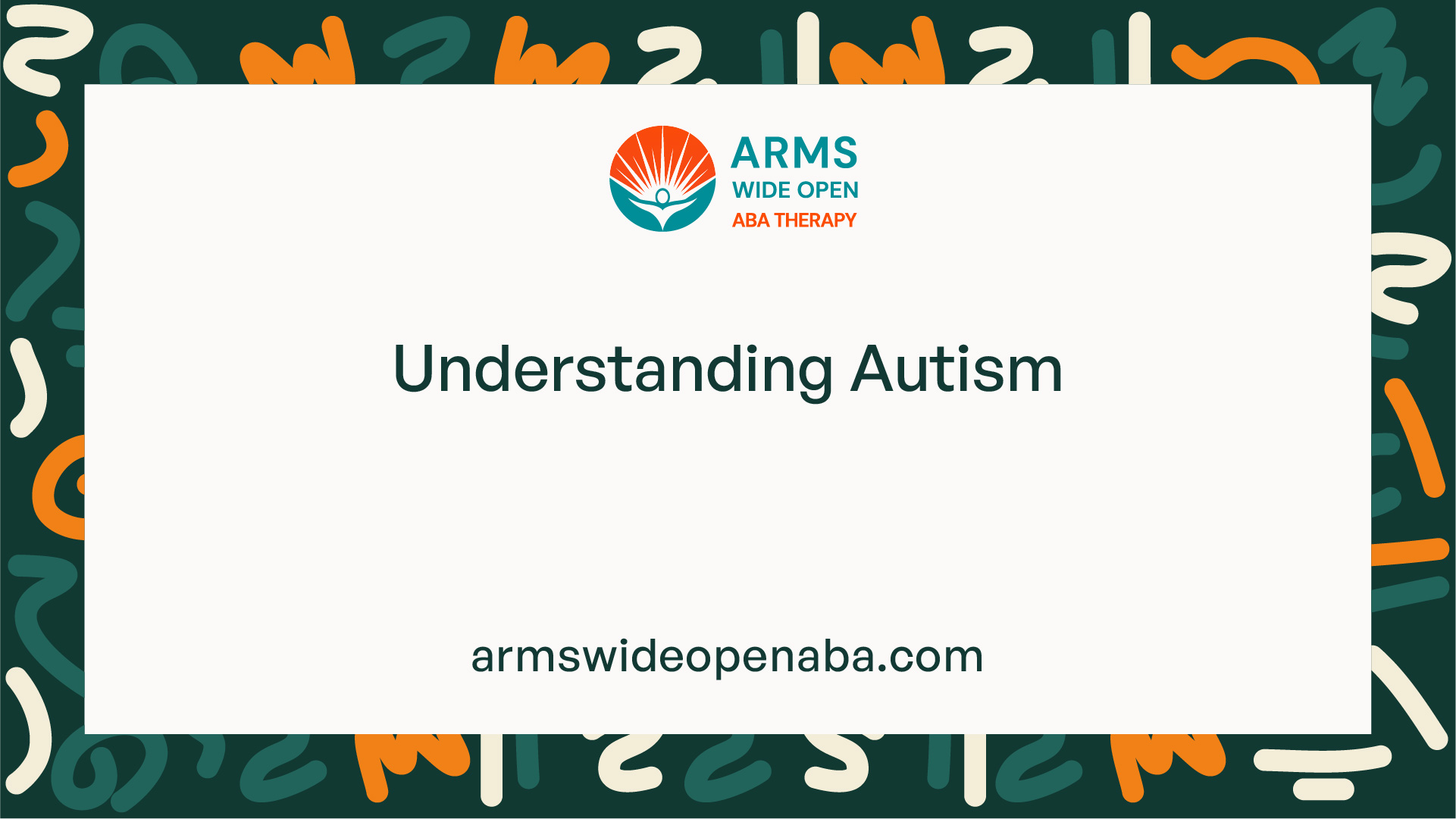
Understanding Autism
Autism, also referred to as autism spectrum disorder (ASD), is a complex neurodevelopmental condition that affects communication, social interaction, and behavior. Understanding the characteristics and the diagnosis and treatment of autism plays a crucial role in providing support for individuals with this condition.
Characteristics of Autism
Autism is characterized by a range of symptoms that can manifest differently in each individual. Common characteristics of autism include:
- Challenges in social interaction, such as difficulty understanding and responding to social cues.
- Communication difficulties, which may involve delayed speech development or challenges in understanding and using verbal and nonverbal communication.
- Repetitive behaviors or restricted interests, such as engaging in repetitive movements or fixating on specific topics.
Individuals with autism may also demonstrate hypersensitivity or hyposensitivity to sensory stimuli, affecting how they perceive and respond to their environment.
Diagnosis and Treatment of Autism
Diagnosing autism involves comprehensive evaluations by healthcare professionals, including developmental pediatricians, psychologists, and speech therapists. The diagnostic process often includes:
- Developmental screenings to assess developmental milestones and behaviors.
- Observations of the individual's behaviors and interactions in various settings.
- Psychological assessments to evaluate communication skills, social interactions, and behavioral patterns.
Early intervention is key in the treatment of autism. Behavioral therapies, speech therapy, and occupational therapy are common approaches used to address communication challenges, behavior management, and social skills development in individuals with autism. Additionally, educational support and individualized treatment plans play a crucial role in helping individuals with autism reach their full potential and improve their quality of life.
Understanding the unique characteristics and individual needs of those with autism is essential in providing effective support and promoting their overall well-being. By recognizing the strengths and challenges associated with autism and exploring appropriate treatments and interventions, individuals with autism can thrive and lead fulfilling lives.
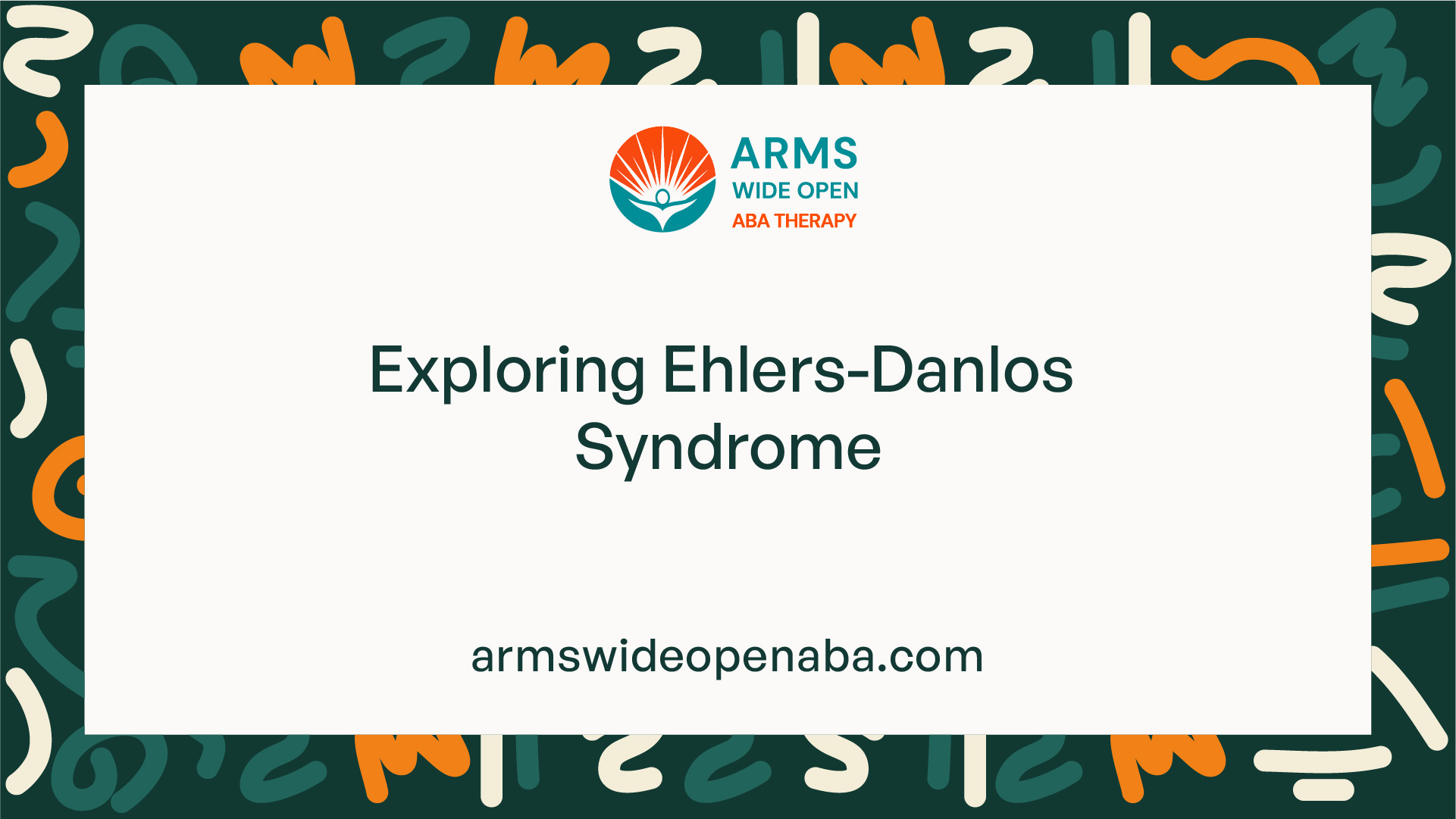
Exploring Ehlers-Danlos Syndrome
When delving into Ehlers-Danlos Syndrome (EDS), it's essential to understand the different types of EDS and the associated symptoms, as well as the methods for diagnosis and management of this condition.
Types and Symptoms of Ehlers-Danlos Syndrome
Ehlers-Danlos Syndrome encompasses a group of genetic connective tissue disorders that affect the body's collagen production. There are several recognized types of EDS, each with its own distinct features and symptoms:
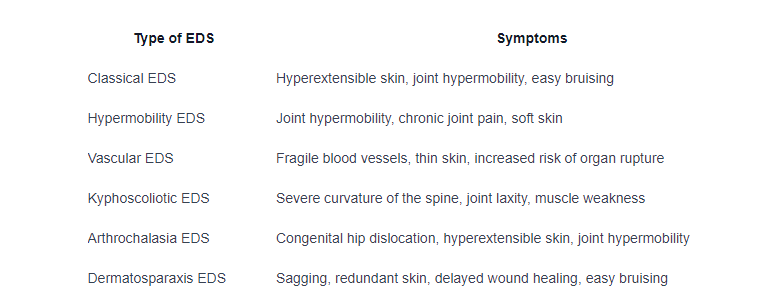
It's important to note that the symptoms of EDS can vary widely among individuals and may overlap with other conditions, making diagnosis and management challenging.
Diagnosis and Management of Ehlers-Danlos Syndrome
Diagnosing Ehlers-Danlos Syndrome typically involves a detailed medical history, physical examination, and genetic testing to confirm the specific type of EDS. Since EDS is a genetic disorder, a thorough family history is often crucial in the diagnostic process.
Management of EDS focuses on symptom relief and preventive measures to minimize complications. Treatment may include:
- Physical therapy to strengthen muscles and stabilize joints
- Pain management strategies to address chronic pain
- Regular monitoring for potential complications like skin fragility and vascular issues
- Genetic counseling for individuals and families to understand the inheritance pattern of EDS
Individuals with EDS often require a multidisciplinary approach to care, involving healthcare providers such as geneticists, physical therapists, and pain specialists. The goal of management is to improve quality of life, reduce pain, and prevent long-term complications associated with the syndrome.
Commonalities between Autism and Ehlers-Danlos Syndrome
When considering the relationship between Autism and Ehlers-Danlos Syndrome, it is important to recognize the commonalities that exist between these two conditions. This section highlights the overlapping symptoms and shared genetic factors that contribute to the connection between Autism and Ehlers-Danlos Syndrome.
Overlapping Symptoms
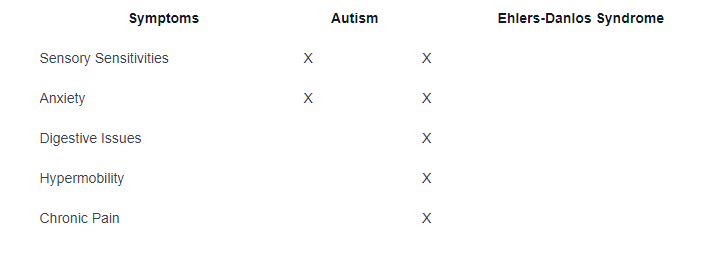
Both Autism and Ehlers-Danlos Syndrome share certain symptoms, such as sensory sensitivities and anxiety. Individuals with these conditions may experience challenges related to sensory processing and emotional regulation. Additionally, Ehlers-Danlos Syndrome is often associated with digestive issues, hypermobility, and chronic pain, which can also be present in individuals with Autism.
Shared Genetic Factors

Genetic studies have identified shared genetic factors that play a role in both Autism and Ehlers-Danlos Syndrome. While certain genes related to neurodevelopment are associated with Autism, genes involved in connective tissues and collagen are linked to Ehlers-Danlos Syndrome. Moreover, chromosomal abnormalities have been found to contribute to the development of both conditions, highlighting the genetic complexities underlying their relationship.
By exploring the overlapping symptoms and shared genetic factors between Autism and Ehlers-Danlos Syndrome, researchers can gain valuable insights into the underlying mechanisms that connect these two conditions. Understanding these commonalities is essential for promoting accurate diagnosis, effective management, and targeted interventions for individuals affected by both Autism and Ehlers-Danlos Syndrome.
The Impact on Daily Life
Living with both Autism and Ehlers-Danlos Syndrome can present unique challenges for individuals dealing with both conditions. Understanding these challenges and employing effective strategies for symptom management is crucial in improving their quality of life.
Challenges Faced by Individuals with Both Conditions
Individuals diagnosed with both Autism and Ehlers-Danlos Syndrome may encounter a range of challenges that affect various aspects of their daily life. Some common challenges include:
- Sensory Sensitivities: Both conditions can result in heightened sensory sensitivities, making everyday stimuli overwhelming and distressing for affected individuals.
- Social Interaction Difficulties: Autism is characterized by difficulties in social communication and interaction, while Ehlers-Danlos Syndrome may lead to physical limitations that impact social interactions.
- Emotional Regulation: Managing emotions and coping with stress can be particularly challenging for individuals with both conditions.
- Motor Skills and Coordination: Ehlers-Danlos Syndrome can affect muscle tone and coordination, which may compound the already existing motor skill challenges often seen in Autism.
Understanding and addressing these challenges is essential for promoting the well-being and comfort of individuals living with both conditions.
Strategies for Managing Symptoms
To enhance the quality of life for individuals with Autism and Ehlers-Danlos Syndrome, it is important to implement strategies that address the unique needs associated with each condition. Some effective strategies for managing symptoms include:
- Multidisciplinary Support: Collaborating with a team of healthcare professionals, including physicians, therapists, and specialists, can provide comprehensive care tailored to the individual's needs.
- Sensory Integration Therapy: Utilizing techniques from sensory integration therapy can help individuals regulate their sensory experiences and improve their tolerance to stimuli.
- Physical Therapy: Engaging in physical therapy tailored to the individual's specific needs can improve mobility, muscle strength, and overall physical well-being.
- Cognitive Behavioral Therapy: Cognitive behavioral therapy can assist individuals in developing coping mechanisms, managing emotions, and improving social skills.
- Customized Education and Workplace Accommodations: Providing accommodations in educational and workplace settings to support individual learning styles and physical needs is crucial for success.
By integrating these strategies into daily life, individuals with both Autism and Ehlers-Danlos Syndrome can better navigate the challenges they face and improve their overall quality of life.
Seeking Support
For individuals who may be experiencing symptoms related to both autism and Ehlers-Danlos Syndrome, seeking support and guidance is crucial in managing these conditions effectively. Proper diagnosis and access to available resources and support networks play a significant role in improving the quality of life for individuals dealing with these complex conditions.
Importance of Proper Diagnosis
Obtaining a correct and timely diagnosis is essential for individuals who suspect they may have autism or Ehlers-Danlos Syndrome, especially considering the overlap in symptoms between the two conditions. A comprehensive assessment by healthcare professionals, including medical history review, physical examinations, and specialized tests, can help in determining the appropriate diagnosis.
When it comes to autism, early identification and diagnosis allow for early intervention and access to tailored treatment plans. Similarly, for Ehlers-Danlos Syndrome, a precise diagnosis enables individuals to understand the nature of their condition and receive appropriate medical care. A thorough diagnosis helps in establishing a foundation for developing effective management strategies to address the specific needs of individuals with these conditions.
Available Resources and Support Networks
For individuals diagnosed with autism and Ehlers-Danlos Syndrome, accessing support resources and networks can significantly impact their overall well-being and quality of life. These resources can provide valuable information, emotional support, and practical guidance to individuals and their families.
Support networks, such as patient advocacy groups and online communities, can offer a platform for individuals to connect with others sharing similar experiences, fostering a sense of belonging and understanding. Moreover, these networks can provide a wealth of information about the conditions, treatment options, and coping strategies, empowering individuals to make informed decisions about their healthcare journey.
In addition to support networks, individuals can benefit from seeking guidance from healthcare professionals, therapists, and specialized service providers who have expertise in autism and Ehlers-Danlos Syndrome. These professionals can offer personalized care plans, therapy sessions, and lifestyle recommendations tailored to the individual's unique needs.
By emphasizing the importance of accurate diagnosis and highlighting the availability of support resources and networks, individuals affected by autism and Ehlers-Danlos Syndrome can navigate their journey with greater confidence and resilience, with an understanding that they are not alone in their challenges.
Sources
https://www.ncbi.nlm.nih.gov/pmc/articles/PMC7711487/
https://pubmed.ncbi.nlm.nih.gov/33271870/
Similar articles
We’re here to help you

Our team is here to assist you in this process. Contact us for any assistance.
it’s easy to apply
We Accept Most Insurances
Our in-network insurance partnerships make ABA therapy more accessible to families throughout our service areas.







Our Insurance Process
We'll request your insurance details to help us verify your plan's coverage for ABA therapy. Once we've received this information, we'll walk you through your benefits, including copayments, deductibles and out-of-pocket maximums, so you know what to expect in advance.
Our team will then handle the preauthorization and all the necessary paperwork.
.svg)





















.jpeg)


































.jpeg)




.jpeg)







.jpeg)











.jpeg)
















